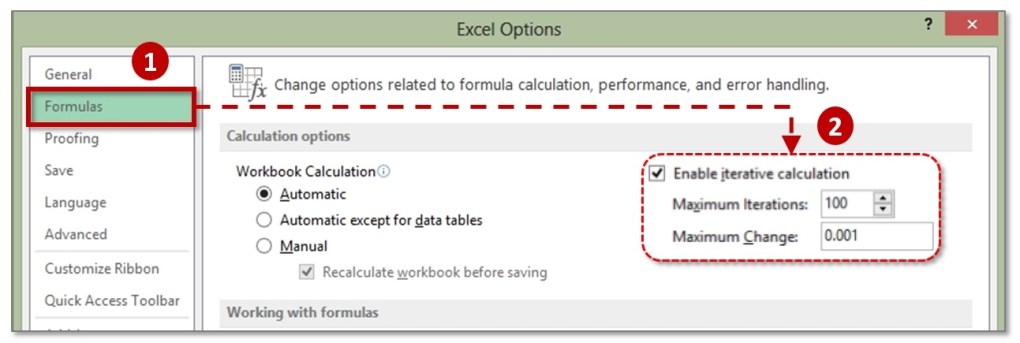
You can make your own copy of the tables above using the link attached below. We will explore how to do this in the next section. Future evaluations will continue to write that timestamp until the value in column B changes.įor this to work properly, we will have to allow for iterative calculations in spreadsheets. Once it finds out that the keyword “yes” is written in column B, it writes down the current timestamp into the cell.

We have nested IF statements that check if the cell is blank. Changing the formula to have the correct range will allow it to return the right result.īelow is an example of a spreadsheet that intentionally uses circular references. The formula in column C was accidentally written to include cell C9 itself in the range to add. Using the Error Checking feature, we figure out that cell C9 has a circular reference that is causing it to return 0. Row 9 provides totals for the columns for Sales, Returns, and Pre-Orders. The table below has sales data for various items. Let’s take a look at a real example of a circular reference in a spreadsheet. Now that we know what circular references are, let’s look into how we can use the Error Checking function to find them and how we can use circular references for specific use cases.Ī Real Example of Using Circular References in Excel We’ll explore in-depth in the next section how we can allow and use a circular reference to create a static timestamp when a certain column is filled up. Though circular references are mostly accidental, there are some cases where using a circular reference could be a good solution for a particular problem. In case other circular references appear in your sheet, Microsoft Excel includes a feature called Error Checking that can help find these circular references. Excel will helpfully return an error if this occurs. The user accidentally included the current cell A8 in the range to sum up, causing a circular reference. In the example below, the formula in cell A8 is supposed to compute the SUM of the six numbers above it. Users may not intentionally create these errors but they are often created accidentally. Excel considers these circular references an error because they are impossible to evaluate. To calculate the value of A5 * 10, Excel will look up the value of A5, which will prompt Excel to yet again retrieve the value of A5. These Excel circular references can create an endless loop of calculations. For instance, we could write =A5 * 10 or =A5<100, which will still be considered a circular reference. This works even if we add other functions or values to the formula. If you type =A5 into cell A5, Excel will detect a circular reference.

Let’s take a look at a scenario that creates a circular reference in your spreadsheet.


 0 kommentar(er)
0 kommentar(er)
